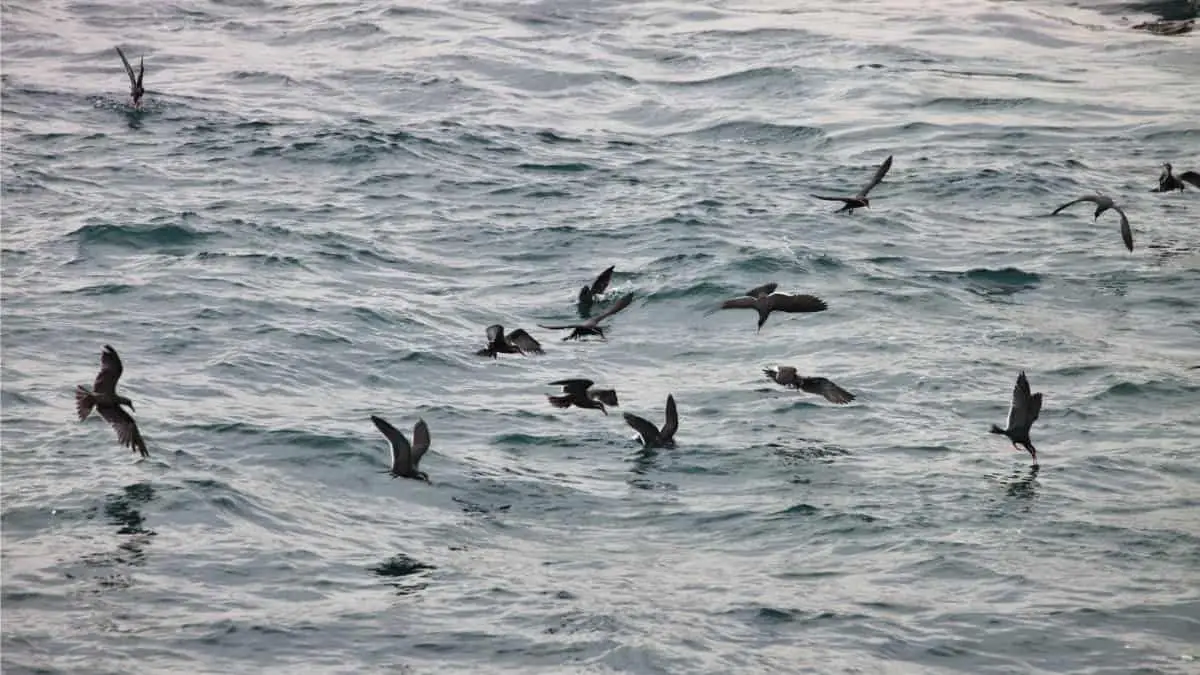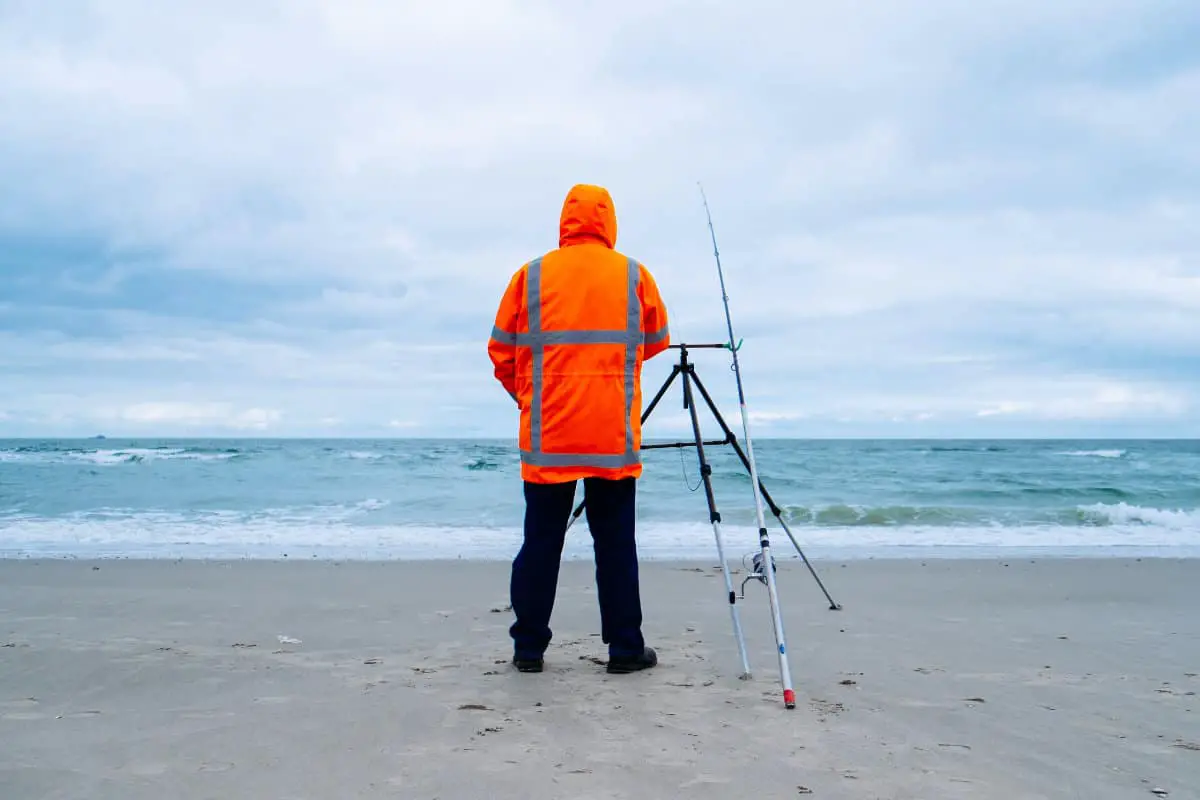Ever wonder how surf anglers catch their big fish time and time again? Well, it is not because they are lucky (although some would think that luck plays a role somehow), but because of the knowledge, they possess.
Gaining this knowledge is an integral part of becoming a pro in surf fishing. These fishermen have the skill to read the surf and find the best spots for surf fishing every time.
How to find the best spot for surf fishing? The best answer to this question would be to read the surf and determine the areas where there is a higher possibility of fish traffic and casting to that area with accuracy using proper gear and equipment.
Knowing how to find the right spot for you to surf fish needs time to master but here are few tips for beginners to keep in mind when trying to surf fish.
Once you’ve mastered the skill of finding the right spot, you’ll have an easier time catching fish. After doing some research, here are some techniques that can help identify the best place for surf fishing.
Look For Structure
The structure we are referring to here is the underwater terrain of the shore you plan to visit. Once you’ve figured out the structure of your beach![]() , then it is easier for you to determine where fish traffic might be at its highest.
, then it is easier for you to determine where fish traffic might be at its highest.
Sandbars – It is the easiest one to determine. This kind of underwater terrain can describe as an underwater slope where the top or crest is either above the water or just below the water. It is suggested that the latter is a much better place to fish.
Usually, the first sandbar you locate is a fairly shallow area and can be easily waded. The idea here is to wade into the first sandbar and then cast your line into the downward slope of the next sandbar which will have deeper waters and better game.
Troughs – That can be described easily as the deep water in between sandbars. You’ll noticeably see a different surf behavior when the water passes a channel.
In a sandbar, the crest of the waves and then this will then be followed by quiet, calmer water before the surf crest once more towards the beach. This calmer, brighter and quiet water is where you’d want to cast your line.
Keep in mind that you’ll have a better chance of catching a bigger fish in deeper waters than in shallow ones. So, look for discolorations in the water surrounding you, these deep colored waters is a sign that there is deeper water in the area.
Rips – That is a place where fish are very likely to frequent because this is where they can ambush bait fish that goes through the rip. You’ll easily find a cut when you watch the behavior of the water.
The water on top of a rip will not crest like it does when there is a sandbar. Instead, it will just continue to flow to the beach.
These rips produce a current called rip current which washes the smaller fish or crabs from the beach into deeper waters where predators are waiting and lurking for a quick meal. You can cast a line in the further area of the rip with a lure that mimics a small fish or a crab.
Hole/Pockets – Holes or pockets are the deeper parts of the located in the trough, sandbar or along the beach. It can be hard to locate, but if you look around, you’ll spot areas where the water has a deeper color, this is likely a pocket or hole.
Fish who are looking for colder water and bottom dweller fish can catch from holes and pockets of the shoreline.
Point – The reason why you’d want to locate this section is that this is a high vantage point. It’s an area of the shore where the underwater terrain juts up and produces a high ground. You can use this to scope out the area and look for spots where the sand had been scooped up, therefore creating a more profound impression on the shore.
Tides – That is not particularly part of the shore structure, but this is an essential factor to consider because of its ability to influence the feeding grounds of the fish. During low tide![]() , the water is calm and clear — fish ventures out into the shallows when this happens.
, the water is calm and clear — fish ventures out into the shallows when this happens.
During low-light and high tide, they are more active. The best advice for beginners is to fish during the first two hours of an outgoing tide and then two hours before an incoming tide.
Also, it is a good idea to walk the shore during low tide so that you get an idea where the sandbars, troughs, rips, and holes are. Use the tips given above on how to spot these fishing grounds if you’re not lucky enough to get a low tide![]() shoreline tour.
shoreline tour.
Watch for Bait Fish Activity – Locating a school of baitfish is a handy trick for surf anglers. Baitfish that are swimming near the surface means that predators are lurking in the bottom area. Cast your line to where those fish are concentrated to have a better chance of reeling in a catch.
You’ll also be able to notice top water action during this time. There will be splashes made by bigger fish when snatching their meal from the surface or you’ll see swirls in the water as the fish snatch and quickly turns from just below the surface.
Watch for Birds – Yes, birds can also be a great sign of game in the water. When you see them flying above and diving below the water, this means that bait fish are swimming the surface to avoid bigger fish below the surface. When you see these birds do this behavior within casting distance, target that area so you can haul in a catch.

You might need to wait for these birds to approach a casting distance for some time. Some of you might not like the wait; you can always cast into troughs and holes while keeping a close watch of the birds just in case they fly closer to shore.
Basic Surf Fishing Equipment
Surf Fishing Reel
There are two types to choose from the
conventional reel and the spinning reel. The standard reel is most use by pros
and have its own set of advantages, but a spinning reel![]() is best to recommend or
beginners in surf fishing,
is best to recommend or
beginners in surf fishing,
Many surf anglers choose the spinning reel![]() because it has fast reel speed, easy to use and is very versatile. This is preferred for beginners as well.
because it has fast reel speed, easy to use and is very versatile. This is preferred for beginners as well.
Surf fishing Tackle
There are so many tackles to choose from, but there are tackles designed explicitly for surf fishing. Use a heavier casting tackle if you are targeting bigger fish such as stingrays, sharks, and large striped bass.
You can ask your local tackle shop they can help set up a tackle for you. The floating tackle is for topwater fishing.
Check out this article ![]() for everything you need to know about essential equipment for surf fishing.
for everything you need to know about essential equipment for surf fishing.
Surf Fishing Rod
The rod of a typical beginner![]() surf fisher should be around nine to twelve feet to give them both the chance to learn how to do surf fishing and also learn to do a long cast.
surf fisher should be around nine to twelve feet to give them both the chance to learn how to do surf fishing and also learn to do a long cast.
Since you are still a beginner, using an inexpensive rod made from graphite is highly recommended. You can upgrade your gear once you’ve mastered your fishing technique.
Surf Fishing Line
As a surf caster, you will need a line that will perform at its best in the harsh condition of your area. The best fishing line![]() to use for surf fishing is no other than the braided line. It offers strength, durability, and low stretch quality.
to use for surf fishing is no other than the braided line. It offers strength, durability, and low stretch quality.
Use a fluorocarbon line as your leader and then switch to braided as your main line to give you a better chance in bringing in a large catch. On this article,![]() I did some research and discussed the best fishing line for surf fishing.
I did some research and discussed the best fishing line for surf fishing.
Related Questions
What accessories do you need to surf fishing![]() ? Other than the necessary fishing rods
? Other than the necessary fishing rods![]() , fishing reel, tackle, and line. Here are some useful tools and accessories you must have when surf fishing.
, fishing reel, tackle, and line. Here are some useful tools and accessories you must have when surf fishing.
- Sharp knife
- Measuring tape
- Sad spike
- A bucket or cooler to keep your catches in
- Spare Spool
- Cloth for wiping your hand and gear
- First Aid Kit
- Long-nose pliers (small)
What is the best time to go surf fishing![]() ? High Tide is the best time to fish. It is the time when the big fish comes inshore to feed. You’ll get even better fish action if high tide coincides with dusk or dawn. Keep in mind that you need to be more cautious during dusk or dawn because of the low light situation.
? High Tide is the best time to fish. It is the time when the big fish comes inshore to feed. You’ll get even better fish action if high tide coincides with dusk or dawn. Keep in mind that you need to be more cautious during dusk or dawn because of the low light situation.
To find the best time when to go surf fishing, check out this article.![]()
Why do fish move inshore? There are two reasons why fish move inshore. One is to feed on schools of baitfish that frequent the shoreline and the second is to swim upstream into rivers to spawn and breed.
Conclusion
As you can see, learning how to read the surf![]() is an invaluable skill for beginning surf anglers. It takes time and practice and sometimes you may need to visit your shoreline during the low tide to get a better view of the underwater terrain, but once you get the hang of it, you’ll be hauling in fish after fish in no time.
is an invaluable skill for beginning surf anglers. It takes time and practice and sometimes you may need to visit your shoreline during the low tide to get a better view of the underwater terrain, but once you get the hang of it, you’ll be hauling in fish after fish in no time.

